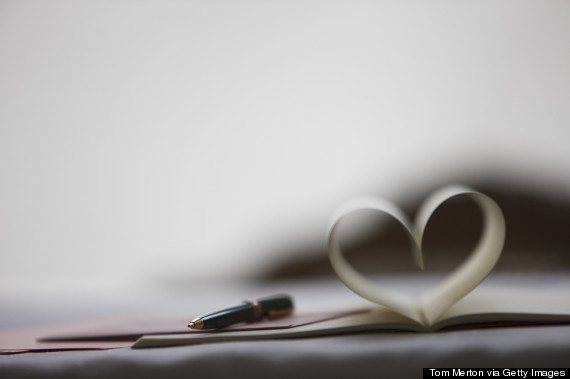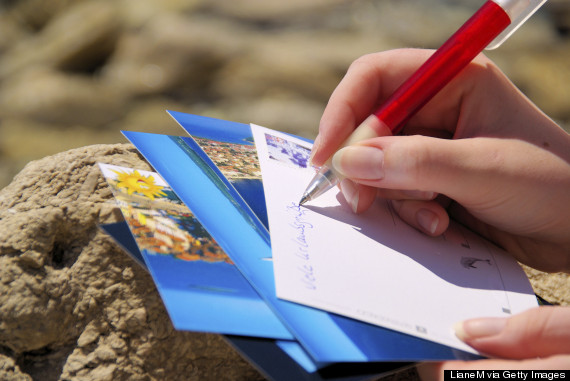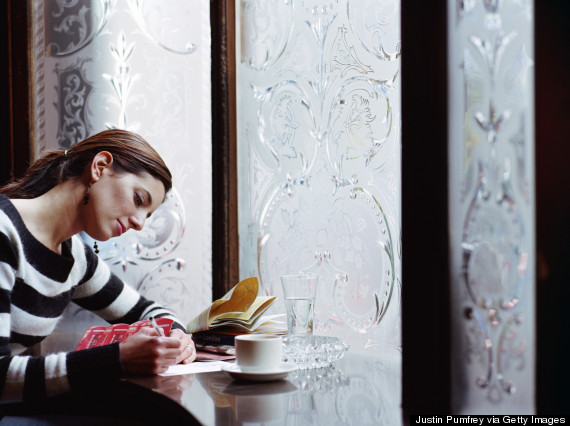
Nowadays we rarely pick up a pen and paper to communicate with one another, but it might not be wise for us to trade this long-standing, cultural practice entirely for the convenience of text messages and emails.
Research has shown that the general act of writing by hand can promote quite a few physical and mental benefits, from improving learning abilities to fostering a more positive outlook on life. And when it comes to writing that is used as a form of communication between two people, namely letters and postcards, the impact of such messages lasts far longer than any alternative version offered in our high-tech world. From the careful intentions of the sender to the value experienced by the receiver, no true match exists for this old-time, traditional means of conversation.
Whether you're trying to cultivate a little romance, nurture a friendship or simply stay connected with loved ones while abroad, here are nine reasons you should still send a letter or postcard once in a while.
They create lasting memories.

Studies have revealed an association between writing by hand and brain development and cognition, increasing neural activity more than typing can. Just as learning by handwriting notecards and study guides proves more effective for students, the moments you commit to paper for others are more likely to stay stored in your own memory as well, allowing you both to reflect back and appreciate them again in the future.
They show how much you care.

In the days of oversimplified communication, receiving a "just to say hi" email can feel like a big deal. So imagine the powerful message you convey when you actually write out your thoughts for another person by hand, purchase a stamp, physically deliver your note to a mailbox and wait days for your special someone to receive it. Their beaming smile at your thoughtfulness will say it all.
They make you feel good.

Aside from the residual satisfaction of knowing you're making a close friend's day with your efforts, science has linked expressive writing to better mood, reduced stress and improved overall sense of well-being. Similar to keeping a gratitude journal or writing about your future goals, sharing your genuine thoughts with another person can be quite the morale booster -- not to mention a mini adrenaline rush as you drop the final draft into the mailbox.
They make every word count.

Postcards only offer so many square inches, forcing the sender to truly think about the message they want to share and how they want to phrase it. Unlike with a quick text or Facebook message, you only have one chance when you send a handwritten message, so you learn just how important it is not to let it go to waste.
They spark creativity.

Taking to pen and paper utilizes the visual, motor and cognitive brain processes differently than when we recruit technology to help us out. It is also by nature more labor-intensive, requiring us to slow down and connect the mind with the hand, one word at a time. Together these factors can make the sensory experience of writing just what you need to get those creative juices flowing.
They require your undivided attention.

By recruiting all of the senses to participate in the writing-by-hand process, little room is left for multitasking (or hyper-speed task switching). To write thoughtfully and coherently, we must focus on the present moment and contemplate -- without side conversations or other to-do list items taking priority -- the thoughts we're aiming to coherently convey to the person on the receiving end of the letter.
They require unplugging.

Let's face it -- we could all use a little extra screen-free time these days. By nature of sitting down to write a thoughtful note to a special someone, your thumbs won't be able to scroll your Facebook feed or type out a text message to another friend in demand of your attention. For those few minutes, you will live entirely in the present moment and in the thoughts you're putting on paper.
They honor tradition.

There's something sacred (and romantic, in the broadest sense) about communicating in the way generations before us once did. We've all heard the stories: It's how your parents communicated with Santa Claus, it's how grandma and grandpa kept their love alive during wartime, it's how immigrant families and friends separated by their respective moves shared written snapshots of their new lives. Computers and smartphones may prove more efficient, but they can never take the place of this kind of sentimental history.
They're timeless.

"A letter always seemed to me like immortality because it is the mind alone without corporeal friend." -- Emily Dickinson
Long after they are written and sent (and even after their senders and receivers are gone), letters and postcards remain to be read, appreciated and preserved. Whether displayed on museum shelves honoring famous historical figures or saved in a scrapbook between two old friends, letters protect the memories of lives lived in a way that technological communication cannot. They are tangible, personal and real, in every sense of the word.